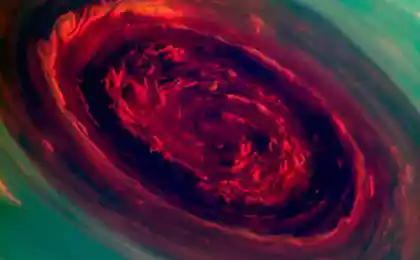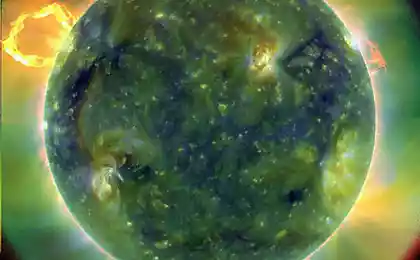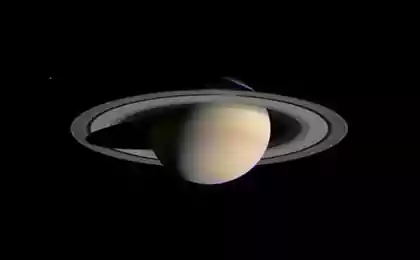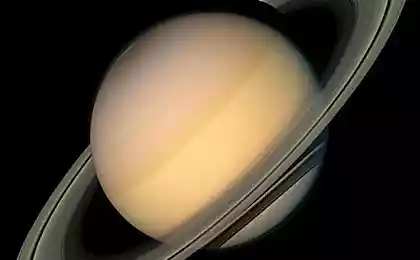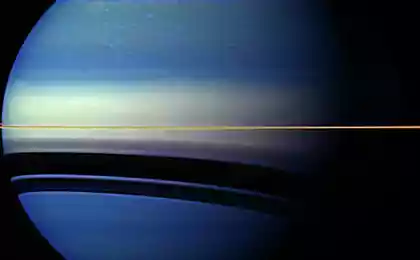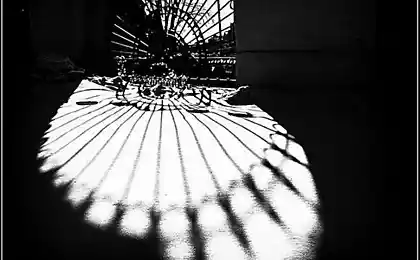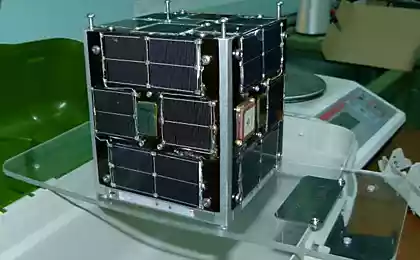438
The shadows of Saturn in the inky darkness of space
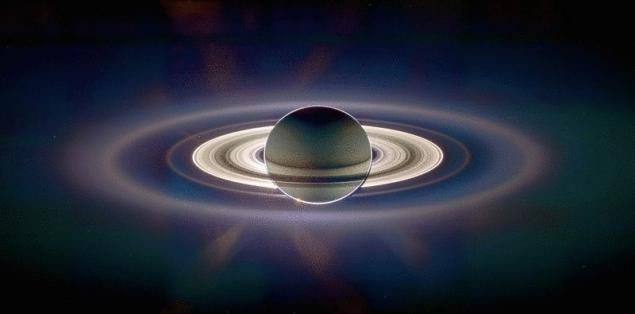
The idea that planets cast shadows in the inky darkness of space, may seem strange, but actually it's very common. The earth's shadow covers the moon during lunar eclipses, and the satellites Writer cast small shadows on the parent planet.
The best place in the Solar system to observations of the beautiful and awesome shadows — this is Saturn. On 1 July, the international Cassini mission celebrates a decade of exploring Saturn, its rings and satellites. This scientific achievement allowed us to obtain not only an invaluable scientific data, but gorgeous images like this.
Floating in the foreground, small and serene, is Saturn's icy moon Mimas. Blue background, which at first glance can be mistaken for the famous spectacular rings of a gas giant: with pale and dark areas separated by long inky streaks. But in reality it is the Northern hemisphere of Saturn. Dark streaks crossing the frame are shadows cast by the rings on the planet.
Although we do not usually associate the colour blue with Saturn, when Cassini arrived at the planet, the Northern region was dressed in a delicate bluish palette, shown in the image. Since this part of Saturn's a fairly cloudless, the scattering on the molecules causes the sunlight to pass a longer path in the atmosphere. Light mainly scatters the shorter bluer – frequencies. Due to this phenomenon the sky on Earth looks blue to us.
Seasonal changes in the few years since then, how was this photo taken, turned the blue in his usual Saturn's Golden hue. The opposite process occurs on the South, which gradually becomes blue.
The combination of infrared, optical and ultraviolet images taken by the narrow-angle camera of Cassini on 18 January 2005. The color palette is a very close match how would this scene looked to the naked eye.
The mission "Cassini-Huygens" is a joint project of NASA, ESA and the Italian space Agency.
The image was first published on the website of NASA in 2005.
Source: globalscience.ru
The implant could revolutionize the treatment of osteoporosis
Abandoned a panoramic restaurant with views of Lisbon
